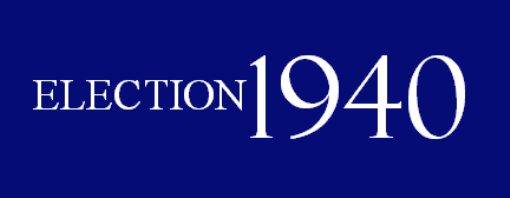The Pittsburgh Press (November 1, 1940)

HAWAIIANS WILL VOTE NOV. 5 ON PLAN TO SEEK STATEHOOD
…
Political and Economical Discrimination Charged by Island Residents; ‘Japanese Situation’ Used As an Argument Against Admission
…
By Riley H. Allen, Editor, Honolulu Star-Bulletin
Honolulu, Nov. 1 –
On November 5, 1940, when citizens of the continental United States are voting for a President, those of Uncle Sam’s Pacific Ocean territory will be balloting on the question:
Do you favor statehood for Hawaii?
Thus an issue which has been before the people of this mid-Pacific outpost of Americanism for more than 40 years will be for the first time put squarely up to the electorate of the islands.
There is no community under the American flag more steadfastly loyal than the Territory of Hawaii. It has the Pearl Harbor Naval Base, Schofield Barracks Army Post and Hickam Field Air Depot to remind it constantly of its bonds.
Conscious of Obligations
And there is on state more acutely conscious of its obligations to the federal government and more willing to live up to these obligations in letter and in spirit.
With all this, Hawaii is increasingly alive to the political and economic discriminations, disadvantages and handicaps to which a territory is subject while a state is not.
A long series of real or threatened discriminations has aroused the loyal and self-respecting people in Hawaii to a determined effort to change the status of Hawaii from a territory to a state.
Discriminations to which Hawaii objects range from an attempt in 1933 to open the territory to “carpetbag government” by appointment of a non-resident as Governor, to a federal restriction enacted by Congress, prohibiting Hawaii from manufacturing more than 3% of its raw sugar into white or refined sugar for delivery to the mainland.
Lobbyists Blamed
This is a restriction openly attributed to the successful lobbying of competing sugar interests entrenched in the more politically powerful states.
Hawaii’s position, both economically and politically, is vulnerable largely because, as a territory, the Hawaiian Islands have no vote in Congress. The territory, like Alaska and Puerto Rico, has a delegate who sits as a member of the House – with a voice in debate but no vote.
If admitted as a state, Hawaii’s 422,000 population would give it rank above Nevada, Wyoming, Delaware and Vermont.
Its area, 6,428 square miles, makes it larger than Rhode Island, Connecticut and Delaware. Its assessed value, $425,000,000, ranks it tenth from the bottom.
HAS BIG TRADE
Hawaii’s volume of commerce approximates $215,024,128 in 1939. It was a purchaser of commodities from the mainland in the amount of $101,817,230.
As a market for continental United States products, it was exceeded in its purchases by only four foreign nations. These were the United Kingdom, $505,226,530; Canada, $493,449,693; Japan, $231,405,106 and France, $181,824,708.
Almost the only objection raised to statehood for Hawaii has been the “Japanese situation.”
This is, briefly, that Hawaii has too large a Japanese racial element in its population – this constituting, according to objectors, a possible “menace” in critical national and international times.
It is an objection which the many and earnest advocates of statehood quite candidly recognize but whose validity they emphatically deny.
Jap Group Increases
They point to the following:
-
Hawaii’s “Japanese population” is decreasing in proportion to residents of other race ancestries. Hawaii voters of Caucasian ancestry outnumber any other ancestry (including Japanese) and the voters of Japanese ancestry will never reach more than 33% of the total vote; and after 1950 (by analysis of dependable vital statistics) will decrease as compared with voters of other ancestries.
-
More than 80% of those of the Japanese race in Hawaii are American citizens.
-
The alien Japanese are dwindling fast. Most of them are aged parents, who came as immigrants. Their children grow up as Americans, not as Japanese.
-
An examination of 1938 registration figures shows no racial group in Hawaii could elect one of its members to a Territory-wide office solely upon the basis of race. The 83,312 votes on the island are divided like this:
| Caucasian | 26,927 | 32.32% |
| Japanese | 23,777 | 28.54% |
| Hawaiian or part-Hawaiian | 22,256 | 26.72% |
| Chinese | 7,160 | 6.59% |
| Korean, Filipino and others | 3,192 | 3.83% |
Independence Opposed
Naturally, the great new World War, the strife in the Orient, with Japan invading China, and the focusing of attention on “Pacific defense” for the United States, have their bearing on the statehood issue. There is something of a sentiment in Washington, to a degree reflected in Hawaii, to :let well enough alone."
Yet both great political parties, at their recent national conventions in Philadelphia and Chicago, measurably encouraged Hawaii to move forward in its campaign for statehood.
Thus Hawaii is encouraged as its citizens approach the plebiscite next month. It is certain that Hawaii’s 422,000 people will not be satisfied to remain in their present status. It should be made clear, however, that this is in no sense a move for “independence” – there is absolutely no independence sentiment in Hawaii.
What Hawaii wants, in fact, is just the opposite of independence – it is a fuller share in the obligations and processes of the Union.
It is a shining hope that Hawaii will be the 49th star in the Flag.